In Brick Township’s Old Woolley Cemetery, colloquially known as the “Gravelley Graveyard,” headstones from centuries ago mark the final resting places of the earliest township residents.
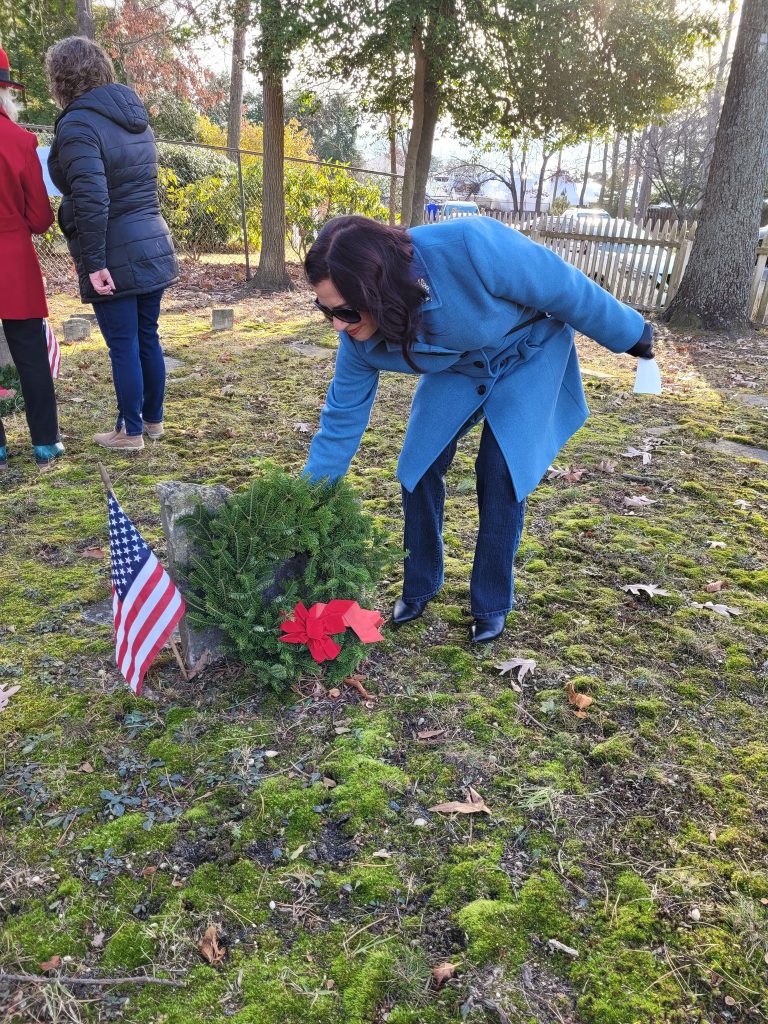
Wreaths are laid at the Woolley/Gravelly graveyard and cemetery in Brick Township, Dec. 2023. (Photo: Brick Township)
Tucked away on Fairview Avenue, upon a hill with a clear view of the Metedeconk River through the fall tree-line, many of the head stones were placed in 1812, likewise providing a resting place for many of the township’s earliest veterans. A small gate opens into the tree-covered parcel of land, surrounded by modern homes in a quiet neighborhood, with silence broken only by gulls singing and the wind whipping down-river.
|
|
Forgotten by many over the centuries, the graveyard has garnered more interest than ever in recent years as its existence became more widely-known in town, and historical preservation took on more importance locally and nationally. Veterans’ groups began placing flags at the cemetery to commemorate Veterans Day years ago, and in recent seasons, the organization Wreaths Across America began honoring those buried with Christmas wreaths and additional American flags next to some of the grave stones where military service can be identified through the now-deteriorated carvings.
Last weekend, the Brick Township Historic Preservation Commission participated in the Wreaths Across America effort by laying wreaths at the graves of Brick Township’s fallen heroes at the Woolley cemetery. Wreaths Across America ceremonies are performed each December with the mission to “remember, honor and teach,” the group said in a description of the day’s activities.
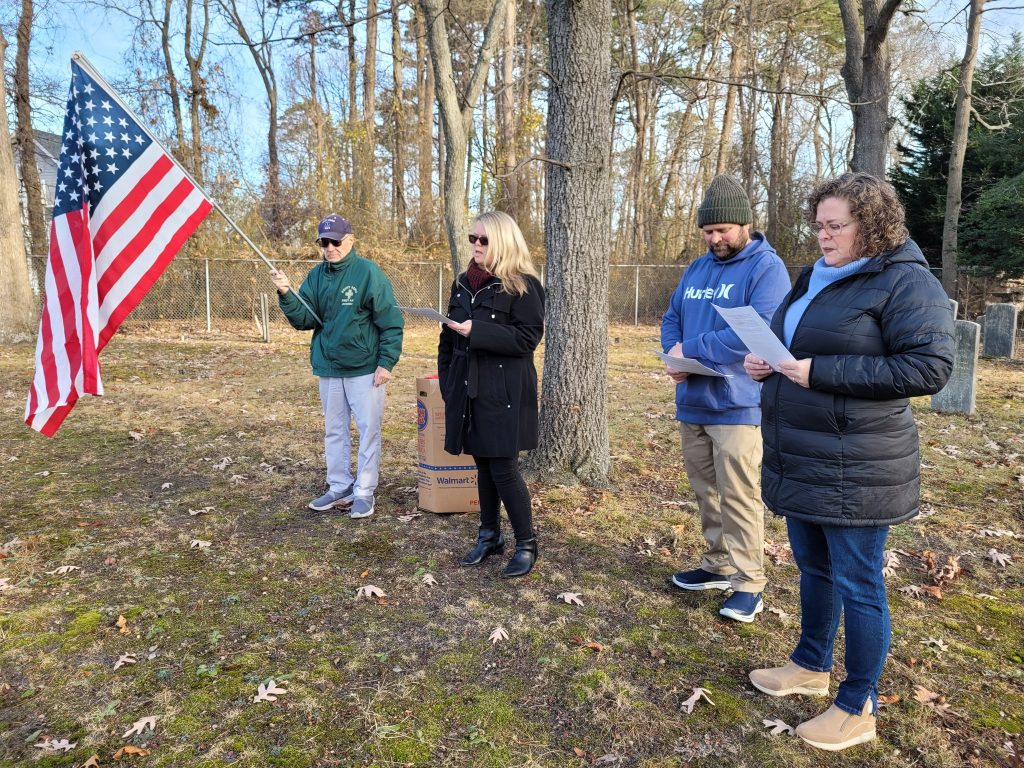
Wreaths are laid at the Woolley/Gravelly graveyard and cemetery in Brick Township, Dec. 2023. (Photo: Brick Township)
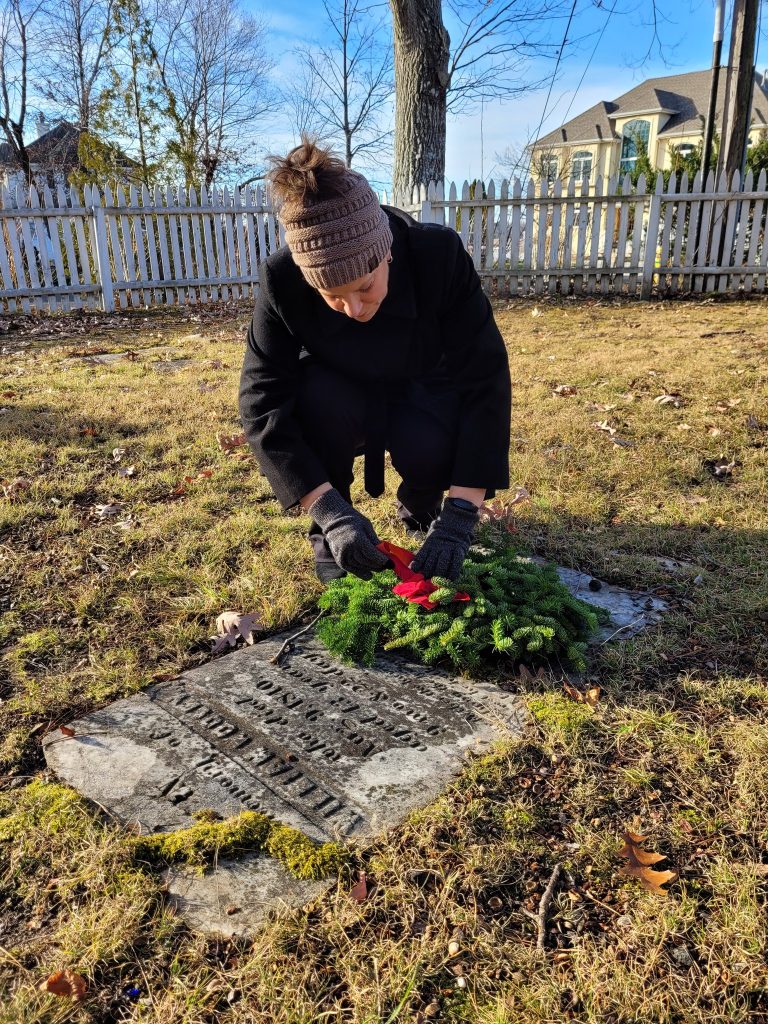
Wreaths are laid at the Woolley/Gravelly graveyard and cemetery in Brick Township, Dec. 2023. (Photo: Brick Township)
The remembrance wreaths are laid in memory of those who have served and are serving in the US Army, Marine Corps, Navy, Air Force, Space Force, Coast Guard and Merchant Marines. This year, across the country there were more than 4,000 participating locations.
Mayor Lisa Crate, along with township council members Heather deJong, Melissa Travers, Perry Albanese and Derrick Ambrosino were among those who began their day laying wreaths at Gravelly Graveyard as well as the Osbornville Protestant Church. There were also ceremonies held at First Baptist Church of Laurelton and Kettle Creek Cemetery.
According to a writing by Township Historian Gene Donatiello, the land on which the cemetery now exists was owned by early township resident Adam Woolley. The eight-acre parcel was purchased by Enoch Jones, who later passed it to Jessie Jones, who decided to set aside a half-acre plot near the river for a cemetery.
As for the name: “According to local legend, an unidentified male body washed ashore on the Metedeconk River, and the only identification found in his pocket was gravelly (gravel). The local people buried him there and somehow it became a nickname for the cemetery,” Donatiello wrote.
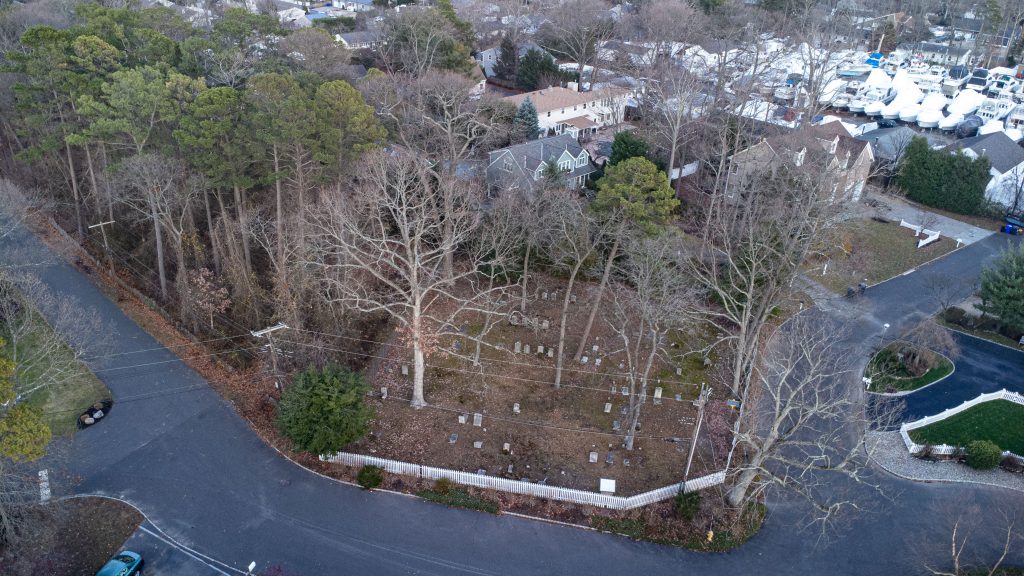
Wreaths are laid at the Woolley/Gravelly graveyard and cemetery in Brick Township, Dec. 2023. (Photo: Brick Township)
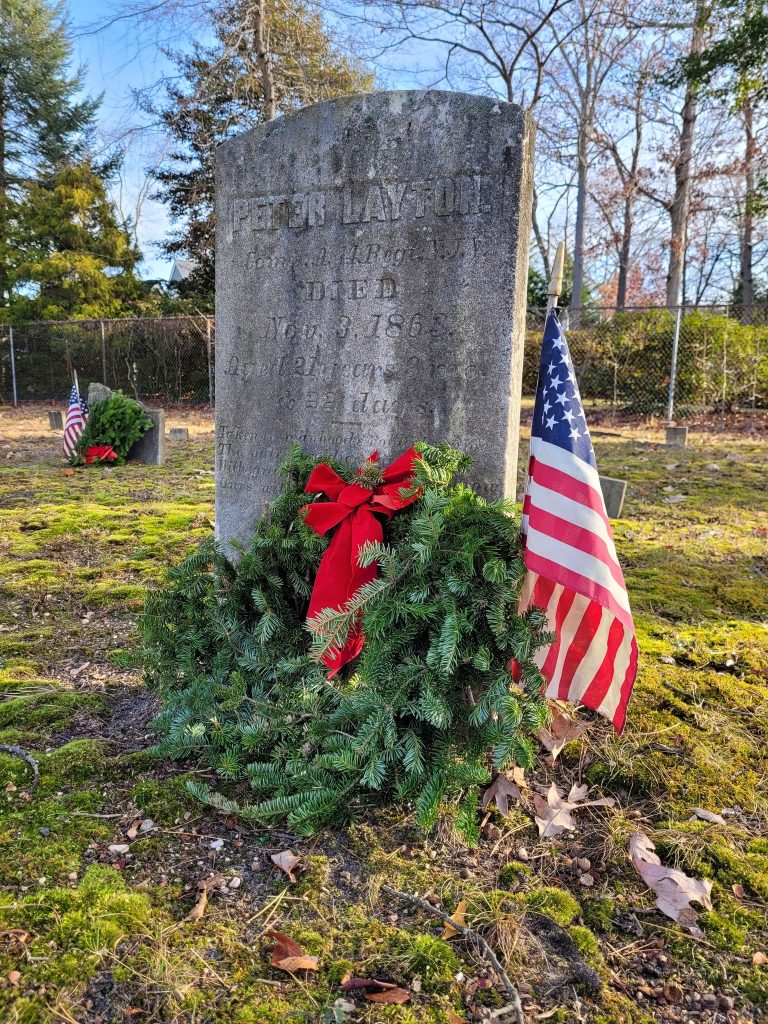
Wreaths are laid at the Woolley/Gravelly graveyard and cemetery in Brick Township, Dec. 2023. (Photo: Brick Township)
The earliest grave that has been identified is that of Rachel Wardell, who was born in 1782 and died in 1812. The last burial is that of Joseph Truex, born 1819 and died in 1901.
Jones himself, who served with George Washington in the American Revolutionary War and helped defend Toms River during a battle with British forces, is the first veteran to have been laid to rest there. But it was the War of 1812 that saw the addition of eight more members of the armed forces who were brought back to Brick for their burial: William Johnson, James Allen, Cornelius Clayton, Isaac Wardell, Adam Woolley, William Woolley, John D. Clayton and James Osborn – all workers at the Butcher-Burr Iron Forge on Forge Pond, and all of whom were members of Jacob Butcher’s First Monmouth Brigade, an infantry company.
Notably, the grave yard is also the final resting place of one of Brick’s first elected officials, William S. Johnson, whose farm in town is today the location of Windward Beach Park.











